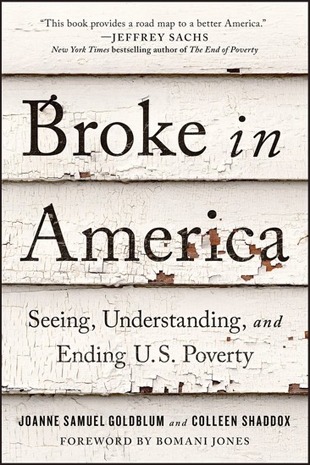This book’s greatest strength is its organization and clarity. Not another political statement that is sure to divide people into “camps” of opinion, this is a clear analysis of how public policy in the United States works to keep people trapped in poverty, rather than find their way out. “Poverty is a self-perpetuating ill,” as the authors put it.
The chapters of Part One couldn’t tell the story more simply and purposefully: Water, Food, Housing, Power, Transportation, Hygiene, and Health. Those are chapters 2 – 8.
Chapter 1 is “Seeing U.S. Poverty” and begins: “If we want to address poverty — to understand and end it once and for all — we have to see it first. And that presents a challenge for many of us. Poverty has been largely invisible during the lifetimes of most U.S. Americans who are not themselves poor. That is changing. As poverty becomes more common, we will either confront it or become a nation resigned to overwhelming economic inequality.”
It is likely that you want to confront poverty and help find ways to overcome it if you are reading this review. This book will help many of us.
Part Two then steps back and looks carefully at the forms of oppression that cause poverty and sustain it. These are Racism, Sexism, Denial of Political Power, Mental Health Discrimination, and High-Poverty Schools (chapters 9 – 13).
All of the necessary statistics are here to convince you that poverty is real and that it is spreading. But offered solutions outweigh evidences of the problems, and that’s refreshing.
Most interesting, and why we at S&P turned to this book, are “What Can I Do?” sections at the end of the chapters. They are full of advice and spiritual practices. In the Food chapter, for instance, these are two of the eight ideas that are offered:
“1. Advocate for nutrition. SNAP, WIC, and the School Nutrition Program are perpetually on the chopping block. You can let your public officials know that these programs need more funding and that you support them.”
“6. Buy lunch for someone else’s child. In school districts around the country, there are children who, for various reasons, are not receiving free lunches but cannot afford to pay. Stories have emerged nationally of children being turned away or shamed. Contact your school administration to see if there are children who owe the lunch program money. Offer to do some fundraising to make sure that every child is fed and respected. Meanwhile, investigate community eligibility.”
